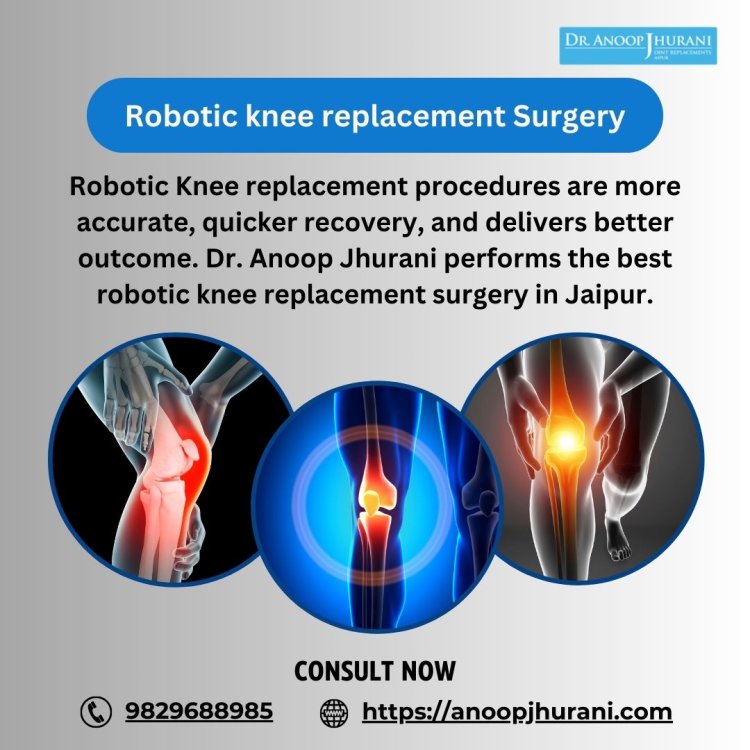How robotic arm reduce the margin of error in knee replacement surgery?
Dr. Anoop Jhurani offers orthopedic services such as knee and hip replacements. He is a renowned orthopedic surgeon in Jaipur, India.
Share this Post to earn Money ( Upto ₹100 per 1000 Views )

Robotic-assisted knee replacement surgery has gained popularity due to its potential to reduce the margin of error and improve outcomes compared to traditional manual techniques. Here's how robotic arms contribute to reducing the margin of error in knee replacement surgery and the importance of using robotic and computer-assisted systems:
1. Precise Planning and Imaging: Robotic systems utilize advanced imaging techniques, such as CT scans and 3D modeling, to create a detailed map of the patient's knee anatomy. Surgeons can then use this information to plan the surgery with exceptional accuracy, including determining the optimal implant size, position, and alignment.
2. Real-time Feedback: During surgery, robotic arms provide real-time feedback to the surgeon. This feedback helps ensure that the surgical plan is being followed accurately and that the components are being positioned as intended. If any deviations occur, the system can alert the surgeon, allowing for immediate adjustments.
3. Enhanced Precision: Robotic arms are designed to move with sub-millimeter precision and can make adjustments in fractions of a millimeter. This level of precision can significantly reduce errors related to implant positioning and alignment, which are critical factors for long-term success and reduced postoperative complications.
4. Minimized Human Variability: Even the most skilled surgeons may have slight variations in their techniques. Robotic-assisted surgery reduces the impact of human variability by executing the surgeon's plan consistently, leading to more predictable outcomes.
5. Reduced Trauma: Robotic systems often use minimally invasive techniques, which can lead to smaller incisions, less soft tissue disruption, and reduced trauma to surrounding structures. This can result in quicker recovery times, less pain, and decreased risk of complications.
6. Faster Recovery: The precision of robotic-assisted surgery can lead to improved implant longevity and function, potentially reducing the need for revision surgeries. This, in turn, can lead to faster recovery times for patients and a better quality of life.
In conclusion, robotic-assisted knee replacement surgery offers a multitude of benefits that collectively contribute to reducing the margin of error and improving patient outcomes. The combination of precise planning, real-time feedback, customization, enhanced precision, reduced human variability, minimized trauma, and faster recovery make robotic and computer-assisted systems a valuable advancement in the field of orthopedic surgery. However, it's important to note that while these systems have shown promise, they still require skilled surgeons who are trained to use the technology effectively and make informed clinical decisions.









